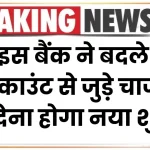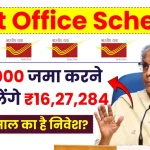$2.2 Billion Bicentennial Quarter: The 1976 Bicentennial Quarter has recently become the subject of much speculation and excitement in the coin-collecting world. While many quarters from this era are only worth their face value of 25 cents, certain rare and valuable versions can fetch a significant sum—though not quite the rumored $2.2 billion. In this guide, we’ll help you understand how to spot a valuable Bicentennial Quarter, what factors influence its worth, and the truth behind the billion-dollar claim. You’ll also learn about common misconceptions, expert evaluations, and practical steps to determine the real value of your quarter.

$2.2 Billion Bicentennial Quarter
| Feature | Details |
|---|---|
| Rare Error Coins | Double-strike, off-center, clipped planchets |
| Silver Composition | 40% silver versions from the San Francisco Mint |
| Grading Impact | Uncirculated and high-graded coins are worth more |
| Most Valuable Known Sale | Over $20,000 for rare mint errors |
| Official U.S. Mint Website | usmint.gov |
The 1976 Bicentennial Quarter is an iconic piece of U.S. history. While the claim that it’s worth $2.2 billion is false, certain versions with minting errors, silver content, or high grades can fetch thousands of dollars. If you own one, check its mint mark, weight, and condition, and consider getting it professionally graded to determine its true value.
Understanding the Bicentennial Quarter
The Bicentennial Quarter was released in 1976 to celebrate the 200th anniversary of the United States’ independence. Unlike other quarters, this one features a unique reverse design showcasing a drummer boy and a torch encircled by 13 stars. The front still displays George Washington’s profile, but with a dual date (1776–1976) to mark the occasion.
This quarter was produced in three different U.S. Mints: Philadelphia, Denver, and San Francisco. Each mint struck different versions:
- Philadelphia Mint (No Mint Mark) – Common copper-nickel clad version.
- Denver Mint (D Mint Mark) – Also common and primarily circulated.
- San Francisco Mint (S Mint Mark) – Special collector’s editions, including 40% silver versions.
Why Some Bicentennial Quarters Are Valuable
While most Bicentennial Quarters remain at face value, specific factors can significantly increase their worth:
- Composition – Silver versions naturally hold more value than standard clad coins.
- Errors – Coins with striking or printing mistakes can be highly sought after.
- Grading & Condition – The higher the quality (graded by PCGS or NGC), the greater the value.
- Demand & Rarity – Coins with unique features that collectors seek can drive prices up.
How to Identify a Rare Bicentennial Quarter
If you come across a Bicentennial Quarter, look for the following features to determine whether it holds any value beyond 25 cents.
1. Check for Silver Composition
The majority of Bicentennial Quarters were made from a copper-nickel clad composition, but the U.S. Mint also released special 40% silver versions.
How to Identify Silver Quarters:
- Mint Mark: Look for an “S” mint mark, indicating it was struck at the San Francisco Mint.
- Edge Color: Silver quarters have a solid silver-colored edge, while standard quarters show a copper-colored stripe.
- Weight: A silver Bicentennial Quarter weighs 6.25 grams, compared to the standard 5.67 grams.
2. Look for Minting Errors
Coins with minting errors can be highly valuable. Some rare errors include:
- Double Strikes – Where the design appears twice due to a striking mistake.
- Off-Center Strikes – The image is misaligned, making the coin look unusual.
- Clipped Planchets – A portion of the quarter is missing due to an incomplete blank during minting.
- Overstruck Coins – A coin struck on another coin, leading to overlapping designs.
- Die Breaks – Small cracks in the die can lead to raised lines on the coin, which collectors often seek.
3. Condition and Grading Impact Value
Professional grading services like PCGS (Professional Coin Grading Service) and NGC (Numismatic Guaranty Corporation) assign grades to coins, which greatly influence their value. The higher the grade, the more valuable the coin.
Coin Grading Scale
| Grade | Description |
| MS-65+ | Gem uncirculated with strong luster |
| MS-60 to MS-64 | Uncirculated but with minor marks |
| AU-50 to AU-58 | Almost uncirculated, slight wear |
| XF-40 to XF-45 | Extremely fine, noticeable wear |
| VG-10 to VF-35 | Very good to fine, visible circulation wear |
4. The Truth About the $2.2 Billion Claim
No Bicentennial Quarter has ever sold for $2.2 billion. This viral claim is misleading. However, certain rare and graded examples have fetched thousands of dollars.
Most Expensive Bicentennial Quarters Sold
- A 1976-S Silver Bicentennial Quarter (MS69) sold for over $19,000.
- Rare error coins have sold for between $5,000–$10,000 depending on condition and rarity.
How to Sell Your Bicentennial Quarter
If you believe you have a valuable Bicentennial Quarter, follow these steps:
- Verify Authenticity – Check the mint mark, weight, and silver content.
- Look for Errors – Inspect for misprints, double strikes, or missing details.
- Get It Graded – Submit your coin to PCGS or NGC for an official evaluation.
- Research Market Value – Check sites like eBay, Heritage Auctions, and CoinTrackers.
- Sell Through Trusted Dealers – Avoid scams by selling to reputable coin shops, collectors, or auction houses.
These 6 Rare Coins Valued at $2 Billion Each – Do You Have One?
Are You Holding a $70 Million Fortune? These Rare Coins Could Be Hiding in Your Collection!
8 Rare Dollar Coins Worth $1000 and More For Each Coin – Do You Have One?
FAQs About $2.2 Billion Bicentennial Quarter
Q1: How can I tell if my Bicentennial Quarter is silver?
Look for the “S” mint mark (San Francisco Mint) and check the edge of the coin—if it’s solid silver with no copper stripe, it’s likely 40% silver.
Q2: What is the most valuable Bicentennial Quarter?
The most expensive Bicentennial Quarter sold for over $19,000, a 1976-S silver proof coin graded MS69.
Q3: Are there any errors to look for?
Yes! Some of the most valuable mint errors include double strikes, off-center errors, and overstruck designs.
Q4: Can I spend a Bicentennial Quarter like a regular 25-cent coin?
Yes, you can. However, before spending it, check its condition and potential rarity to ensure you’re not giving away a valuable coin.
Q5: Where can I get my coin graded?
The best grading services are PCGS and NGC.











